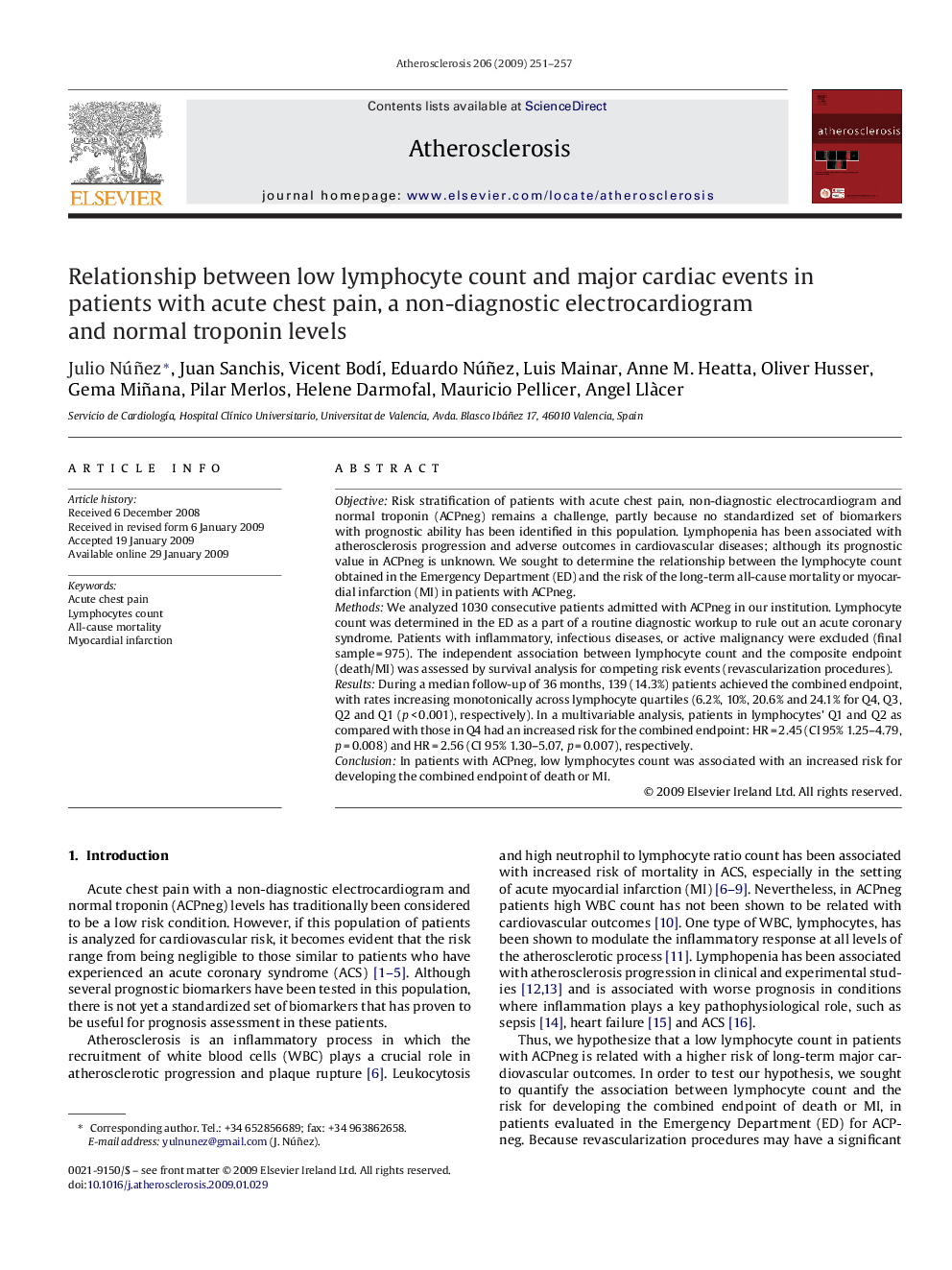| Article ID | Journal | Published Year | Pages | File Type |
|---|---|---|---|---|
| 2893300 | Atherosclerosis | 2009 | 7 Pages |
ObjectiveRisk stratification of patients with acute chest pain, non-diagnostic electrocardiogram and normal troponin (ACPneg) remains a challenge, partly because no standardized set of biomarkers with prognostic ability has been identified in this population. Lymphopenia has been associated with atherosclerosis progression and adverse outcomes in cardiovascular diseases; although its prognostic value in ACPneg is unknown. We sought to determine the relationship between the lymphocyte count obtained in the Emergency Department (ED) and the risk of the long-term all-cause mortality or myocardial infarction (MI) in patients with ACPneg.MethodsWe analyzed 1030 consecutive patients admitted with ACPneg in our institution. Lymphocyte count was determined in the ED as a part of a routine diagnostic workup to rule out an acute coronary syndrome. Patients with inflammatory, infectious diseases, or active malignancy were excluded (final sample = 975). The independent association between lymphocyte count and the composite endpoint (death/MI) was assessed by survival analysis for competing risk events (revascularization procedures).ResultsDuring a median follow-up of 36 months, 139 (14.3%) patients achieved the combined endpoint, with rates increasing monotonically across lymphocyte quartiles (6.2%, 10%, 20.6% and 24.1% for Q4, Q3, Q2 and Q1 (p < 0.001), respectively). In a multivariable analysis, patients in lymphocytes’ Q1 and Q2 as compared with those in Q4 had an increased risk for the combined endpoint: HR = 2.45 (CI 95% 1.25–4.79, p = 0.008) and HR = 2.56 (CI 95% 1.30–5.07, p = 0.007), respectively.ConclusionIn patients with ACPneg, low lymphocytes count was associated with an increased risk for developing the combined endpoint of death or MI.
